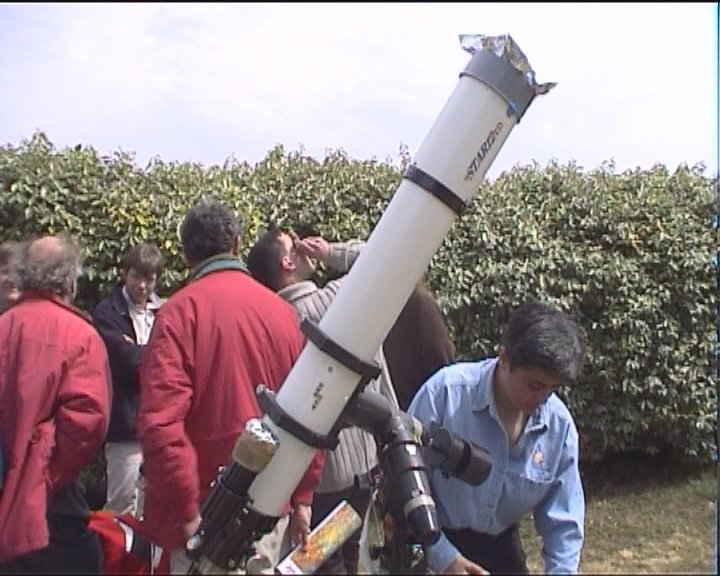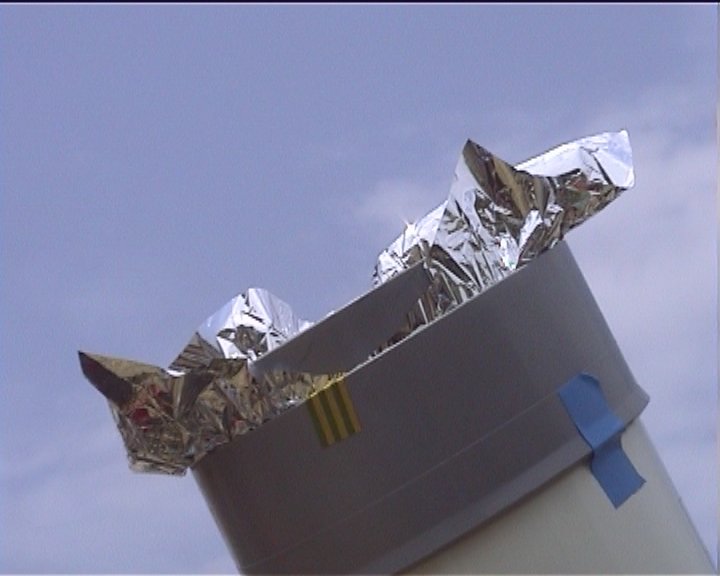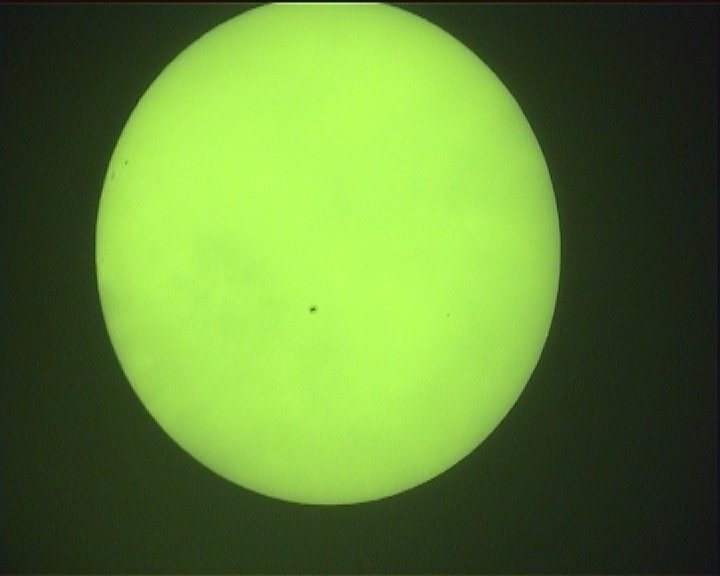| Mercure Transit 7th May 2003... | ||||
| Observation of the Mercure Transit at Oléron (France - Long. 46°10'N ; Lat. 1°10'W) the 7th of May 2003 with a Sony DV camcorder and a refractor 120mm ED Astrophysic on a GP vixen mount.
More on planet transit from the French Institute of Celestial Mechanic (IMCCE), click here |
||||
The observations was made during the 8th Astrophysical School of Oleron organized by the CNRS, french natianal center for research. This year, exceptionnally the school was opened to amateurs to review possible collaboration in spectroscopy. See the website with multiple pictures and power-point presentations.
The first contact was not observable, with too many clouds, but the last one was quite correct, despite the numerous light clouds crossing. The sone camcorder was directly attached to the refractor, a green filter was inserted and the exposure level was left in automatic mode. The focus of the camcorder has been locked on infinite, only the refractor focusing knob was used to adjust the focus. The mounting is about the same used on the ETX90, see it here

Astrophysic ED120 - GP Vixen mount - Oléron 2003

Solar filter used is mylar film, into plastic tubes

One video frame, full disk with sunspots
A temptative of timing through "phone official vocal clock" was made with no success. The method would have been the same as described for the galilean sattelites, but this time, the phone used did not have speaker and the surrunding noise of the public prevented any decoding of the tops on the audio canal.
Video frame have been extracted to show picture evolution of the Mercure planet over the Sun disk
 |
 |
 |
 |
During the observation, the mount was not polar aligned previously so large drift of the phenomena was seen on the original movie. To produce the final one, I used the video software Ulead Media Studio Pro to recenter and crop the image manually from time to time in the sequence to compensate the shift. I also used the capability to increase contrast and brightness to compensate clouds crossing at the expense of increasing noise.
Few seconds of the original video [400Kb]
Overall, the result is quite "nice" but not useable on a scientific standpoint.
Final post-production video, accelerated 2x [4Mb]
Download the hi-res result (10Mb file)
Other School participants tried to image the phenomena, some with greater success as Didier Favre, click here
| Lessons learned |
As much as possible, if wheather permits, align mount to minimize shift
Mobile phone with official clock service can be used but ask for silence around... and avoid to put the phone too close to sensitive part of the camcorder to minimize mobile electromagnetic perturbations visible on the video images
But overall, it was a very good preparation for the Venus transit the 8th of June 2004.
More on Venus transit (IMCCE), click here